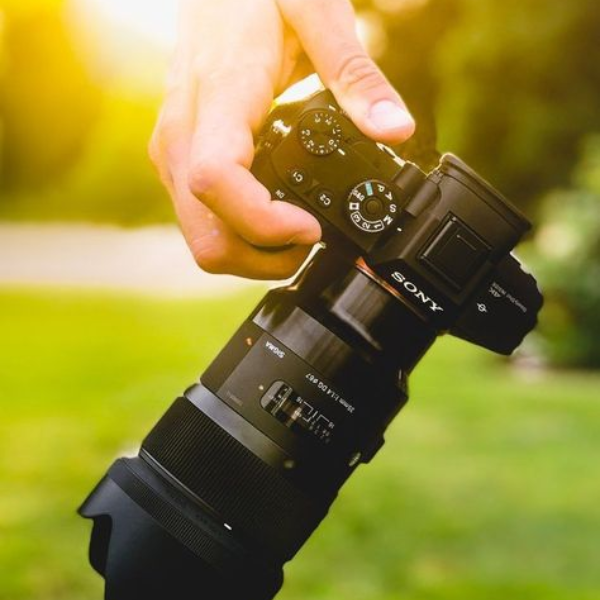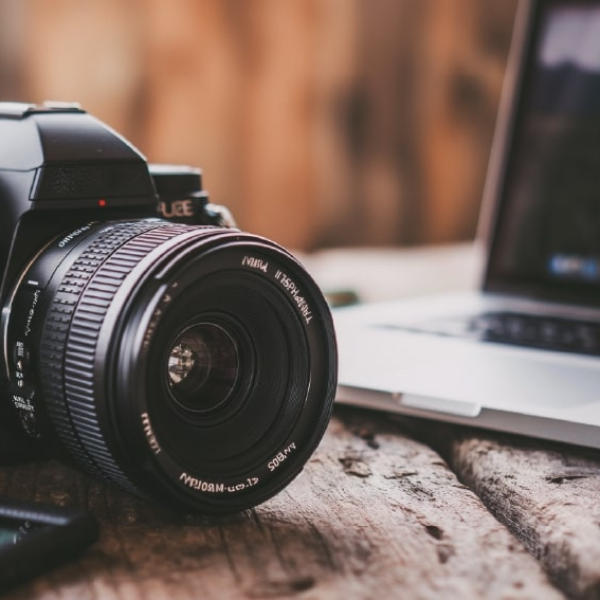Uncategorized
Explore Advanced DSLR Features for Creative Photography
1. Dual Memory Card Slots – Redundancy and Flexibility
Many advanced DSLRs come with dual memory card slots, allowing photographers to:
Benefits of Dual Memory Card Slots
1. Redundancy for Data Security
- Simultaneous Recording: With dual slots, you can configure your camera to record the same image or video file to both cards simultaneously. This acts as an automatic backup, ensuring your files are safe if one card fails or becomes corrupted.
- Particularly useful for professional photographers working at weddings, events, or in photojournalism, where losing images is not an option.
2. Increased Storage Capacity
- Overflow Mode: In this setup, the camera uses the second card as additional storage when the first card is full. This is especially helpful for high-resolution photography or 4K/8K video recording, which can quickly fill up storage space.
- Ideal for extended shooting sessions, such as wildlife expeditions or travel photography.
3. Workflow Flexibility
- File Type Segregation: Dual slots allow you to store different file types on separate cards—for example:
- RAW files on one card for editing.
- JPEGs on another card for quick sharing or delivery.
- This setup streamlines the workflow for photographers who need fast turnaround times.
4. Video Recording Backup
- Split Video Clips: For videographers, the camera can split recording across the two cards, preventing the loss of an entire project if one card fails.
- Some cameras even allow relay recording, ensuring continuous capture without interruptions.
5. Convenient File Organization
- With dual slots, you can assign specific tasks to each card, such as saving still photos to one card and videos to the other. This makes it easier to manage files during post-production.
Types of Memory Card Configurations
- Identical Slots (Same Card Type):
- Both slots accept the same type of memory card, such as SD cards, CFexpress, or XQD cards.
- Common in high-end cameras for seamless workflow and maximum performance.
- Mixed Slots (Different Card Types):
- Some cameras offer a combination of card types (e.g., one SD card slot and one CFexpress slot).
- Provides compatibility with existing cards while offering the option to upgrade to faster formats.
Scenarios Where Dual Slots Shine
- Weddings and Events: Redundancy ensures that critical moments are securely captured.
- Sports and Action: Overflow mode supports high-speed burst shooting without interruptions.
- Documentary and Travel: Multiple storage options accommodate extended shoots in remote locations.
- Commercial Photography: File separation streamlines editing and client delivery.
Cameras with Dual Card Slots
Many cameras across brands offer dual memory card slots, including:
- DSLRs:
- Canon EOS-1D X Mark III
- Nikon D6
- Mirrorless Cameras:
- Sony Alpha a7 IV (dual SD slots, one supporting CFexpress A)
- Canon EOS R5 (CFexpress + SD slot)
- Nikon Z9 (dual CFexpress/XQD slots)
Conclusion
Dual memory card slots provide peace of mind and versatility, making them an essential feature for professionals and advanced photographers. Whether you’re concerned about data security, need additional storage, or want a streamlined workflow, this feature ensures you stay focused on creating without worrying about losing your work.
- Back up images: Save identical copies on both cards for added security.
- Separate file types: Store RAW files on one card and JPEGs on the other for easier organization.
- Expand storage: Automatically switch to the second card when the first is full.
Creative Benefit:
Dual slots ensure you never lose precious shots during important events like weddings, allowing for uninterrupted creativity and peace of mind.

2. Advanced Autofocus Systems – Precision and Speed
Modern DSLRs are equipped with sophisticated autofocus (AF) systems featuring:
- Multiple AF points: Up to 100+ focus points for accurate subject tracking.
- Eye and face detection: Essential for sharp portraits.
- 3D tracking: Great for sports and wildlife photography.
Creative Benefit:
An advanced AF system ensures that your subject stays sharp, even in dynamic scenes or low-light conditions, enabling you to focus on composition rather than worrying about focus.

3. High-Speed Continuous Shooting – Capturing the Action
High-end DSLRs offer rapid burst modes, with speeds ranging from 10 to 20 frames per second (fps). This feature is perfect for capturing fast-moving subjects like:
- Sports athletes
- Birds in flight
- Dancing or motion-filled events
Creative Benefit:
High-speed shooting ensures you don’t miss the perfect moment, letting you choose the best frame from a sequence.
4. Dual Native ISO – Superior Low-Light Performance
Some DSLRs feature dual native ISO settings, which optimize sensor performance for both low and high ISO values. This reduces noise while preserving image quality in challenging lighting.
Creative Benefit:
Dual ISO allows you to shoot clean, detailed images in dim environments or experiment with dramatic low-light compositions without compromising quality.
5. In-Camera HDR – Expanded Dynamic Range
Many advanced DSLRs offer an in-camera High Dynamic Range (HDR) mode that combines multiple exposures into a single image with balanced highlights and shadows.
Creative Benefit:
HDR is perfect for high-contrast scenes like sunsets or cityscapes, allowing you to capture details in both the brightest and darkest areas for a visually striking result.
6. Interval Shooting and Time-Lapse Recording
DSLRs often feature intervalometers for shooting at set intervals, enabling you to create:
- Time-lapse videos
- Stunning star trails
- Dynamic scenes like blooming flowers or bustling streets
Creative Benefit:
This feature helps you tell stories through movement and change over time, adding a new dimension to your photography.
7. Customizable Buttons and Modes
Professional DSLRs allow you to customize buttons, dials, and modes to fit your shooting style. Create shortcuts for commonly used settings like:
- ISO adjustments
- White balance changes
- Autofocus modes
Creative Benefit:
Customization streamlines your workflow, letting you focus on creative decisions rather than technical adjustments.
8. Multiple Exposure Mode – Layering Creativity
The multiple exposure feature lets you combine two or more images into one in-camera. This technique is excellent for creating:
- Surreal effects
- Double-exposure portraits
- Dreamy landscapes
Creative Benefit:
Layering images allows for artistic experimentation, adding a creative flair to your photography.
9. Advanced Metering Modes – Perfecting Exposure
Most advanced DSLRs offer multiple metering options, including:
- Spot metering: For precise exposure in specific areas.
- Center-weighted metering: Balances exposure based on the subject in the center.
- Matrix or evaluative metering: Considers the entire scene for balanced exposure.
Creative Benefit:
Metering modes give you greater control over how light is measured, helping you achieve the desired mood and tonal balance in your shots.
10. Tilting and Articulating LCD Screens
Tilting or fully articulating screens make it easier to shoot from unconventional angles, such as:
- Ground-level for macro photography
- Overhead for crowded events
- Side angles for creative perspectives
Creative Benefit:
A flexible screen helps you explore unique compositions, making it easier to experiment with unconventional viewpoints.
11. Focus Stacking – Incredible Depth of Field
Some DSLRs offer focus stacking features, where multiple images with different focus points are combined into one with extensive depth of field.
Creative Benefit:
Focus stacking is invaluable for macro and landscape photographers who want sharp details throughout their frame, creating images with exceptional clarity.
12. Weather-Sealed Bodies – Shooting Anywhere
Professional DSLRs are often weather-sealed to resist dust, moisture, and extreme temperatures, ensuring reliability in challenging environments.
Creative Benefit:
Weather sealing gives you the freedom to shoot creatively in any condition, from rain-drenched forests to arid deserts.
13. Advanced Video Capabilities
Many DSLRs now offer:
- 4K or 8K video recording
- Slow-motion capabilities
- External microphone and headphone ports
Creative Benefit:
Advanced video features let you explore hybrid content creation, allowing for cinematic storytelling alongside stunning stills.
14. Custom Picture Profiles – Tailored Looks
Customize your image’s tone and color directly in the camera by adjusting picture profiles, such as:
- Neutral
- Vivid
- Monochrome
Creative Benefit:
Tailored profiles let you achieve a specific aesthetic in-camera, reducing post-processing time and maintaining consistency across shots.
15. GPS Tagging and Wi-Fi Connectivity
Advanced DSLRs often include GPS for geotagging your photos and Wi-Fi for instant sharing and remote shooting.
Creative Benefit:
Geotagging is great for travel photographers, while Wi-Fi connectivity enables real-time creativity and convenience during shoots.
Conclusion
Exploring the advanced features of your DSLR can transform your photography, allowing you to capture unique perspectives, push creative boundaries, and refine your craft. Whether it’s through experimenting with multiple exposures, mastering metering modes, or utilizing focus stacking, the possibilities are endless. Dive into these features, and watch your creative vision come to life!


